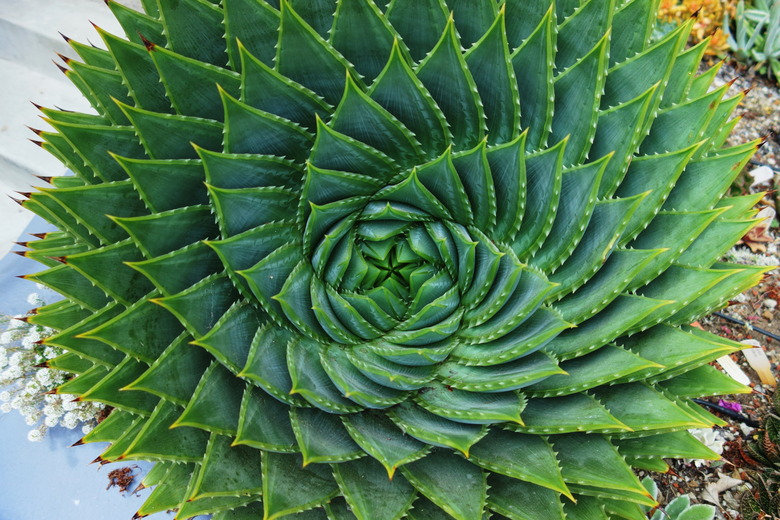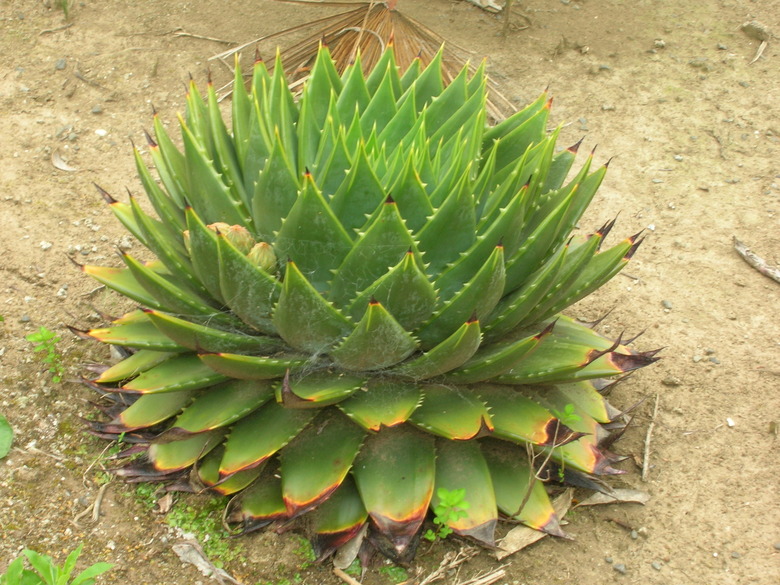How To Propagate A Spiral Aloe Plant (Aloe Polyphylla)
The stunning spiral aloe (Aloe polyphylla) features a rosette of leaves in a perfect spiral pattern. No wonder you want to propagate it, because who wouldn't want one?
Unfortunately, unlike most other succulent plants, the spiral aloe does not produce offshoots (called pups), so it cannot be propagated the way the aloe vera plant can, for example. Further, propagating via leaf cuttings or stem cuttings is not possible, either. The only way to propagate this rare aloe is through its seeds.
The spiral aloe is a South African native that grows in the wild in USDA hardiness zones 9b to 11b.
Warning
Several articles found online claim that the spiral aloe produces offshoots like some other aloes, and some sources even provide detailed instructions on how to harvest pups from the mother plant to create new aloe plants. This is inaccurate and cannot be done. Seek information from reliable sources such as university sites or reputable commercial growers.
The Spiral Aloe’s Native Habitat
While the spiral aloe is now widely cultivated in botanic gardens and many nurseries, it has become endangered in the wild of its native area, which is the Drakensberg Mountains in the Kingdom of Lesotho, a small country surrounded by South Africa.
The overcollection of its seeds is the primary culprit, although collecting spiral aloe seeds is illegal. In addition, it has a single pollinator in South Africa, the malachite sunbird, which is also in decline.
Seed Sources for the Aloe Polyphylla Plant
Some U.S. nurseries, mostly in California, now sell both spiral aloe plants and seed. A search for aloe polyphylla seeds or plants returns multiple vendors. For instance, Ecoscape in Santa Cruz specializes in this plant only and sells both plants and seeds, and Monrovia sells plants.
Be sure to do your homework and purchase only from reputable growers, because you cannot verify the quality or accuracy of many online vendors. This plant's pollination and seed production depends on a complicated biology, so anyone claiming to have spiral aloe seeds for sale should have the scientific background to back up the claim.
Planting Spiral Aloe Seeds
The spiral aloe grows in a range of soils although, like most aloes, it is found naturally on rocky slopes and gravelly soils. So it's no wonder this plant requires a well-draining soil medium to avoid root rot and other fungal diseases.
In hot climates, these plants typically grow in the shade of larger shrubs and trees, so they may need some protection from direct sunlight during hot afternoons to provide more indirect light.
Potting Medium
Ensure that your container or pot has drainage holes. Use a mix of rock and potting soil in a ratio of 1:1. Any high-quality potting soil will work, but avoid peat moss products, because they can hold too much water. For rock, use 5/16" grade red lava, perlite or pumice. The ideal mix is similar to a cactus potting mix or a hydroponic grow system.
Seed Germination
While information on coaxing spiral aloe seeds to germinate is not always consistent, experts agree that the seeds should be pretreated before sowing by either soaking them in water until the radicle emerges (the first sprout from the seed) or scarified, i.e. roughed up a bit to break the outside dry coating, using fine grit sandpaper.
If the seed is scarified, scatter it over the potting medium and then cover it with a very fine sprinkling of soil. Ensure cool soil temperatures, and don't use a heat mat, as the seeds won't germinate if the temperature exceeds 80°F.
These seeds need light to germinate; if necessary, use a grow light on a 16-hour day schedule. Maintain even moisture, but take care to avoid overwatering.
The radicle should emerge in about two weeks. At about four weeks, the first cotyledon leaf (the first leaves to appear) should be visible, and a careful tug at the baby plant should tell you that new roots have formed as well.
Tip
As the spiral aloe produces new growth, monitor the soil and moisture levels to avoid too-wet conditions.
You will likely need to repot your spiral aloe after about five years. You might see the spiral cave in and collapse. If this occurs, pull out the entire plant and, using a sharp knife, remove any dead root tissue. Let the plant dry out in the shade and then replant it in a larger container.

